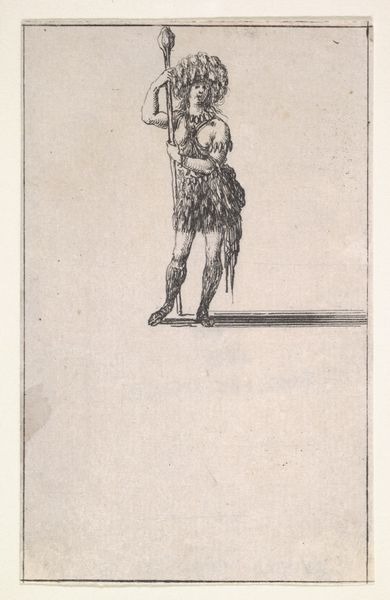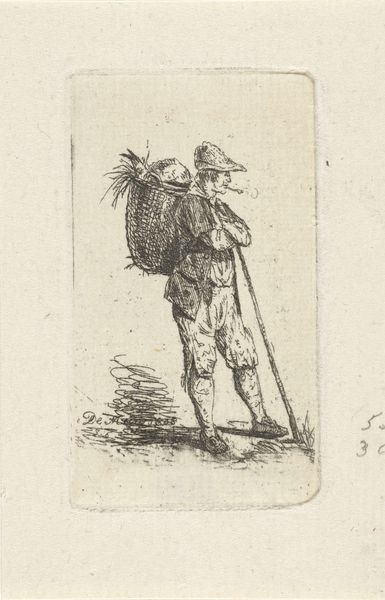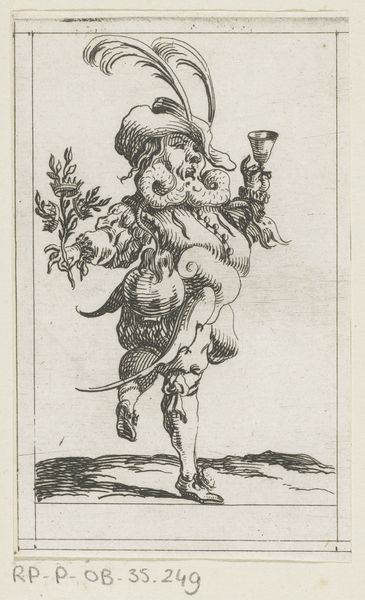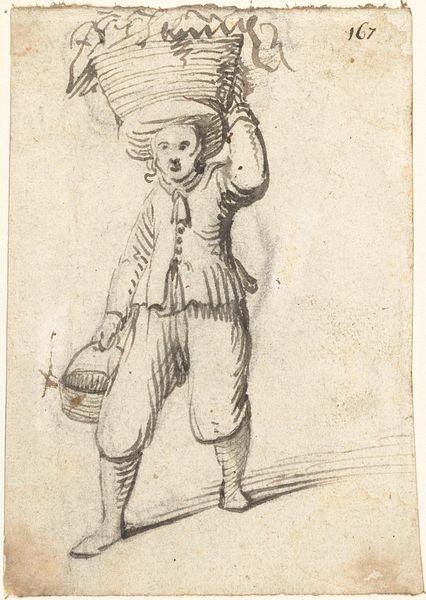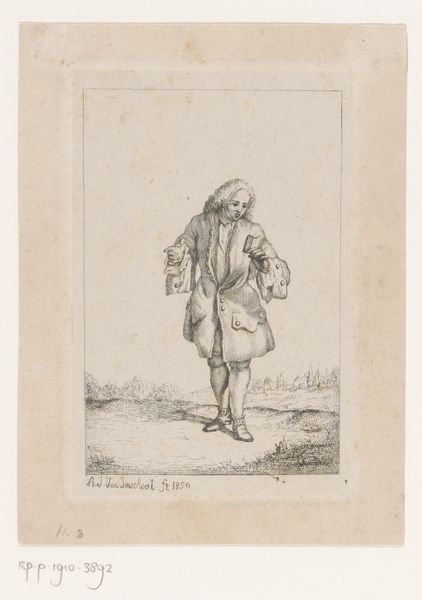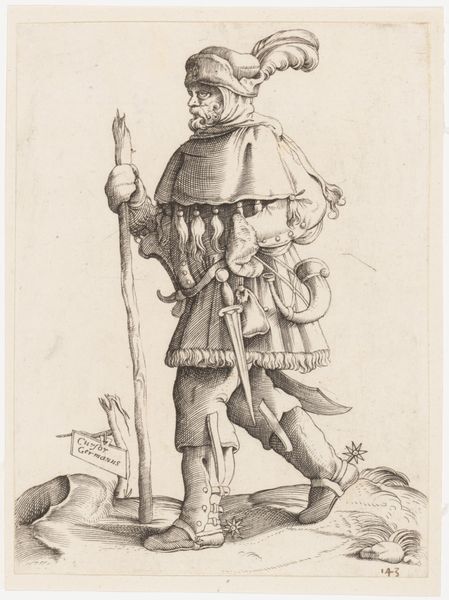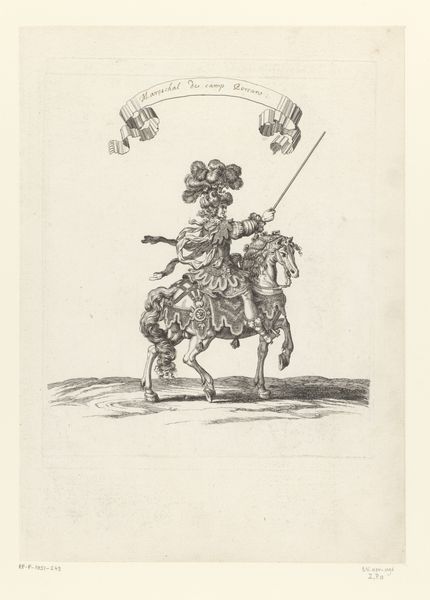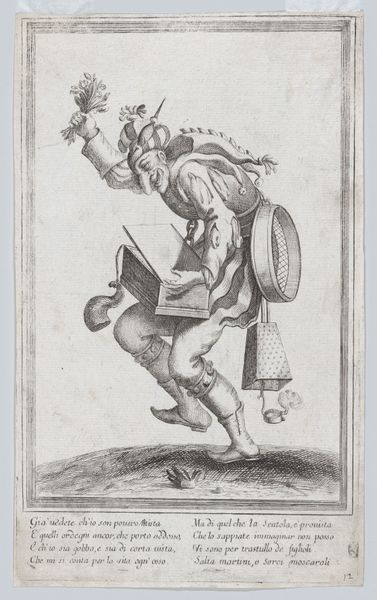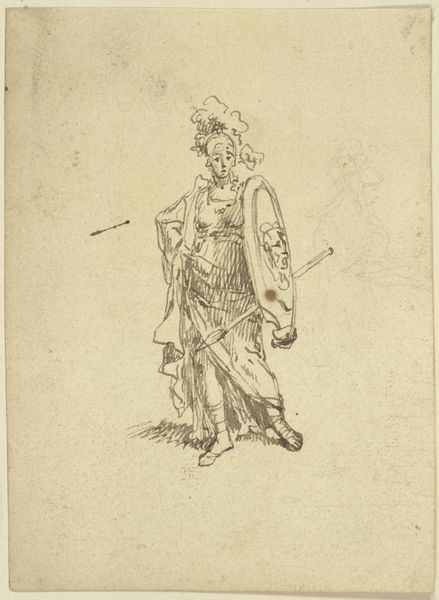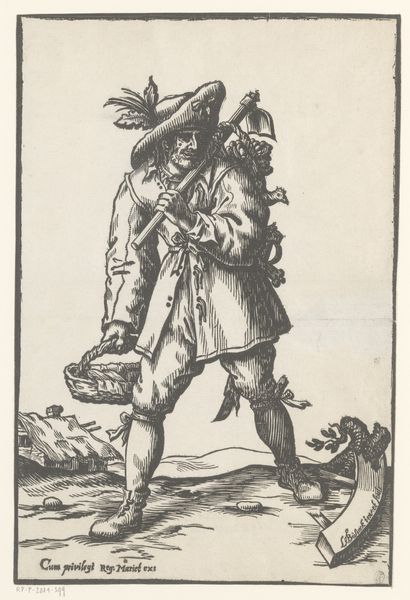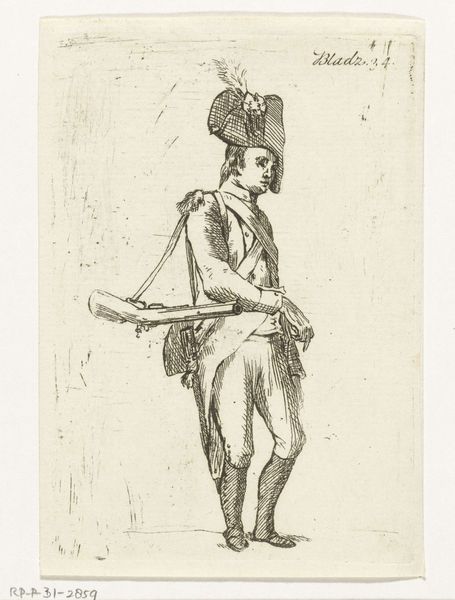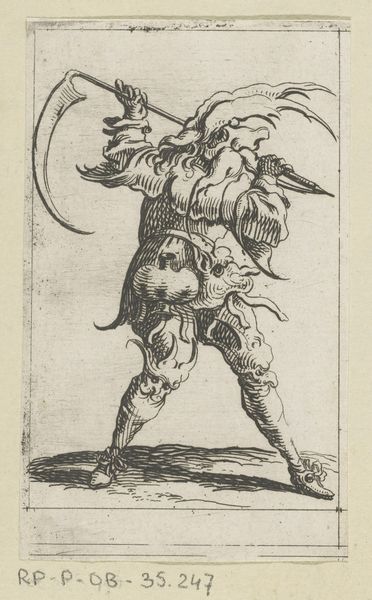
Numidie, from 'Game of Geography' (Jeu de la Géographie) 1644
0:00
0:00
drawing, print, etching
#
portrait
#
drawing
#
baroque
# print
#
etching
Dimensions: Sheet: 3 1/2 x 2 3/16 in. (8.9 x 5.6 cm)
Copyright: Public Domain
Curator: This is "Numidie, from 'Game of Geography'", a striking etching created in 1644 by Stefano della Bella. Editor: Immediately, I notice the figure's theatrical costume—it speaks volumes about representation and identity during that period. Curator: Indeed. Della Bella was commissioned for a series intended as a game. It depicts various countries as costumed figures. Here, he is showing Numidia, an ancient territory in North Africa. Editor: The choice of costume, the staff, the very pose… it all constructs a very specific vision of Numidia. One wonders how accurate, or rather, how laden with colonialist perspectives this representation is. Curator: It's crucial to consider the printmaking process, though. Della Bella's skill in etching brings a remarkable delicacy to the lines. Notice how he uses varied line weights to create depth and texture, especially in the feathery skirt. Editor: That texture feels incredibly tactile. However, it’s impossible to ignore the broader political landscape here. What narratives are being reinforced or challenged through this visual vocabulary of dress and gesture? Who has the power to represent whom? Curator: The 'Game of Geography' itself highlights the commodification of different cultures. Each print was likely bought and used in social games, re-enforcing those notions within aristocratic circles. Editor: Exactly. Art isn’t created in a vacuum. By understanding its socio-political context, we see it acting as a tool, a medium, for power dynamics and cultural narratives. It shows us as much about the representer as the represented. Curator: And Della Bella's choices about line, shading, and composition were certainly critical in creating that impression. To focus only on accuracy, or inaccuracy misses his contributions to crafting this visual understanding through material processes. Editor: This piece isn't just a document; it’s a conversation starter, a way to question the past and present. Its material construction has always informed ideological construction. Curator: A conversation about the work of hands and materials… and a conversation about who had those hands, who chose those materials and who made sure that those actions always carried meaning.
Comments
No comments
Be the first to comment and join the conversation on the ultimate creative platform.
